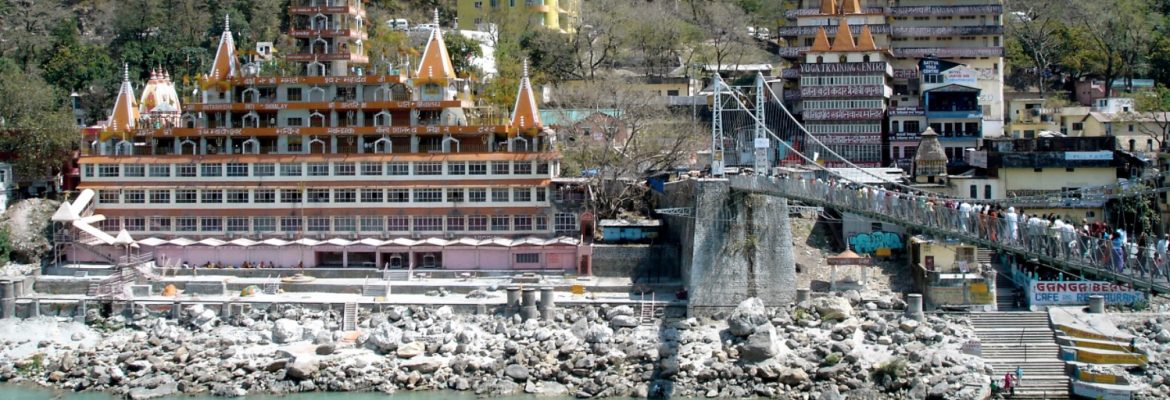Swarg Niwas & Shri Trayanbakshwar Temple
This 13-storey wedding cake of a temple dominates the left bank of Lakshman Jhula, with dozens of shrines to Hindu deities on each level. Ever since the Beatles rocked up at the ashram of the Maharishi Mahesh Yogi in the late ‘60s, Rishikesh has been a magnet for spiritual seekers. Today it styles itself as the ‘Yoga Capital of the World’, with masses of ashrams and all kinds of yoga and meditation classes. Most of this action is north of the main town, where the exquisite setting on the fast-flowing Ganges, surrounded by forested hills, is conducive to meditation and mind expansion. In the evening, an almost supernatural breeze blows down the valley, setting temple bells ringing as sadhus (spiritual men), pilgrims and tourists prepare for the nightly ganga aarti (a fire offering or ritual performed on the Ganges). You can learn to play the sitar or tabla; you can try Hasya yoga (laughter therapy), practise humming or gong meditation, or even take a punt on crystal healing.
But Rishikesh is not all spirituality and contorted limbs; it’s now a popular white-water rafting centre, backpacker hang-out, and gateway to treks in the Himalaya. Rishikesh is divided into two main areas: the crowded, unattractive downtown area (Rishikesh town), where you’ll find the bus and train stations as well as the Triveni Ghat (a popular and auspicious bathing ghat and place of prayer on the Ganges); and the riverside communities 2km upstream around Ram Jhula and Lakshman Jhula, where most of the accommodation, ashrams, restaurants and travellers are ensconced. The two jhula (suspension bridges) that cross the river are pedestrian-only – though scooters and motorcycles freely use them. Swarg Ashram, located on the eastern bank, is the traffic-free ‘spiritual centre’ of Rishikesh, while High Bank, west of Lakshman Jhula, is a small enclave popular with backpackers.
Visit India Epic India Route © Monika Newbound


